Valuable stamps can come in many different shapes, colors and sizes, and every one of them has very interesting stories to tell. Ever since the first issuance of the Penny Black in the 1900s, stamps have made their permanent mark in history and have become one of the most desired items of a collector. Stamps are tiny pieces of faded paper commemorating historic events and notable faces which were used to pre-pay for letters on envelopes and received by our ancestors – who would’ve thought that such stamps are now worth a fortune? In case you have chanced upon a rare stamp, it might be one of the most valuable stamps out there, if you are lucky enough.
The Rarest and Most Valuable Stamps in the World
For serious stamp collectors, rare stamps and stamps with errors are their main targets to find. As time passes by, postage stamp values may increase incredibly, some can even reach more than a million US dollars. Have you ever wondered what the most valuable stamps in the world are? Still renowned as the “King of Hobbies” or the “Hobby of Kings”, stamp collecting will always be around as long as there are stamp collectors who are willing to spend a lot of money in order to acquire rare and valuable stamps. Those who were able to do so have seen their investments double (or even triple) in value in a reasonably short period of time. Below are some of the rarest and most valuable stamps in the world. Please take note that thanks to the ever-available demand, the prices have increased. Also, keep in mind that there could be new philatelic rarities being discovered, so it pays to double check your stamp albums.
You are watching: The Most Valuable Stamps in the World
-
Mauritius “Post Office”
Country: Mauritius
Estimated Value: About US$1.67 million
Reason Why It’s One of the World’s Valuable Stamps: Printing Error (the printed words Post Office should be Post Paid)

In September 1847, the Mauritius “Post Office” stamps were issued in Mauritius, a British colony. The stamps come in 2 denominations: a one-penny orange-red; and a two pence deep blue. These stamps were engraved by Joseph Barnard, who designed the stamps based on the Great Britain stamps first released in 1841 (head of Queen Victoria and released in 2 denominations of the same colors: a one-penny red brown; and a two pence blue). Even if these stamps were locally made and possess a rather primitive/native characteristic, they made Barnard’s name legendary in Mauritius’ postal history.
There were 500 of each value printed and issued on September 21, 1847, and many of these stamps were used on invitations sent out to friends and celebrities of Lady Gomm, the wife of the Governor of Mauritius, for a ball that she was hosting that weekend.
The words “Post Office” can be seen on the left side of the stamp, but on the next issue in 1848, these were replaced by “Post Paid”. Many stamp collectors believe that the words “Post office” had been an error.
What made the Mauritius “Post Office” postage stamps some of the most valuable stamps in the world is because it has been part of the prized collections of famous or prominent stamp collectors such as: Alfred F. Lichtenstein (American philatelist), Arthur Hind (American industrialist and philatelist), Alfred Caspary (philatelist), Henry J. Duveen (art dealer and philatelist), Sir Ernest de Silva (Ceylonese business magnate and philatelist), and Sir William Beilby Avery (baronet and British philatelist).
As the years go by, the prices of these stamps grew astronomically. It was reported that one of King George V’s secretaries heard about the news of a stamp being sold at an auction in 1904, and commented that “some damned fool” had paid a huge sum of money for only 1 postage stamp to which George suddenly replied, “I am that damned fool”. King George V purchased an unused Two Pence Mauritius “Post Office” for a sum of £1,450, which was a world record in 1904. If we adjust the price via inflation rate, it would be £137,500 in the year 2010.
The best among all of the Mauritius Post Office collections is owned by Hiroyuki Kanai, which has unused specimens of the one-penny and two-pence stamps, called “Bordeaux Cover”. This Bordeaux Cover was dubbed “La piece de resistance de toute la philatelie” (“The greatest item in all philately”). This collection of Kanai was sold in 1993 via David Feldman (auctioneer), with a price of about US$4 million.
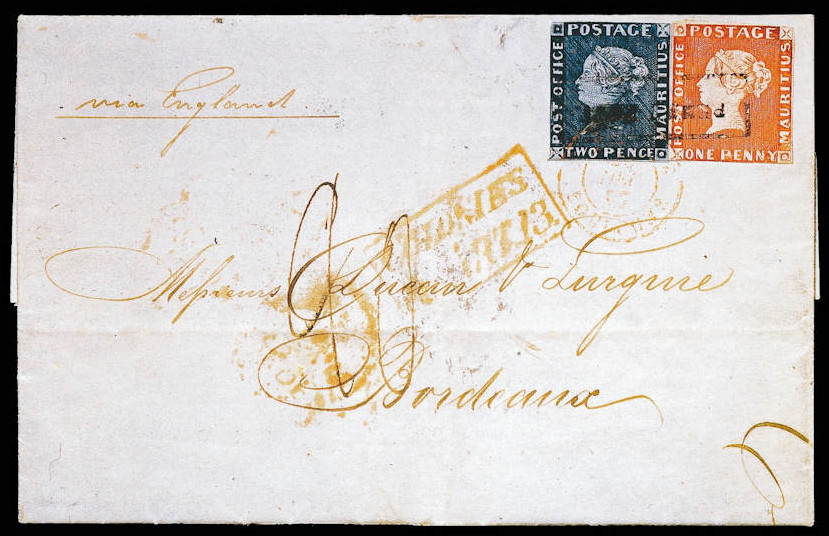
There are only 26 known pieces of the Mauritius Post Office stamps that exist today: 14 one-penny and 12 two-penny stamps. In 2011, a two-penny blue Mauritius Post Office stamp was sold at an auction for £1.05 million (US$1.67 million) in the UK.
-
US Benjamin Franklin Z-Grill
Country: United States
Estimated Value: About US$8.8 million
Reason Why It’s One of the World’s Valuable Stamps: Z pattern that is unique among grill templates used by the USPS
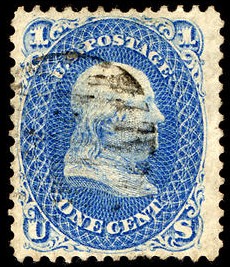
In February 1868, the United States Postal Service issued a 1-cent postage stamp featuring Benjamin Franklin. These stamps were common at the time, but what separates some of them from the others is the Z-Grill. The “Z” variant of a grill is pressed into the stamp, thereby creating tiny indents embossed into the paper. Grilling allows the cancellation ink to be readily absorbed into the paper, thus preventing people from reusing the stamps via washing out the cancellation marks. The grills were deemed to be impractical to use and so they were discontinued after 1870.
Only two Z-Grill stamps remain up to this day, and both have cancellation marks. The first Z-Grill is part of the Benjamin Miller Collection owned by the New York Public Library.
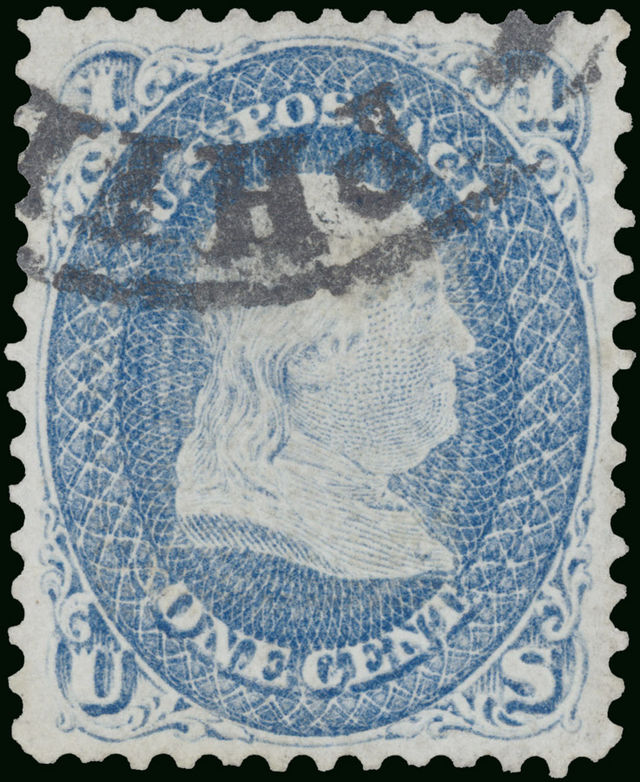
The second Z-Grill’s story started in 1998. It was sold for $935,000 to the stamp dealer Mystic Stamp Company. Siegel Auctions hosted the auction and placed the stamp as part of the Robert Zoellner collection.
In October 2005, Mystic Stamp Company President Donald Sundman traded the Z-Grill to Bill Gross, a financier, for a block of 4 Inverted Jenny stamps which were worth almost US$3 million. Bill Gross then became the owner of the only complete US 19th Century Stamp collection.
From May 27, 2006 up until October 1, 2007, these two Z-Grills were put on display at the National Postal Museum, along with the first portion of the Benjamin Miller Collection.
The Z-Grill is considered to be one of the rarest and most valuable stamps in the US (and also the world), and the present estimated valuation of the stamp is at US$8.8 million.
-
Inverted Jenny
Country: United States
Estimated Value: About US$2.7 million
Reason Why It’s One of the World’s Valuable Stamps: Print error (image is upside down)
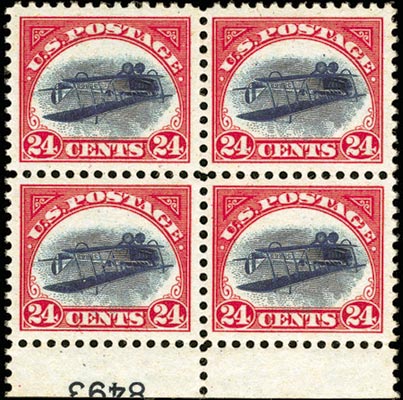
In May 10, 1918, the United States first issued the postage stamps of the Inverted Jenny, Jenny Invert or Upside Down Jenny. It was the first stamp ever in the US that was issued for air delivery. The image shows the Curtiss JN-4 airplane in the middle part of the design, which is distinctively upside down.
These stamps were printed on sheets of 100; however, each sheet had to be run twice through the printing machine. Thus, one pane was accidentally flipped on the second pass, which caused the error. They were already sold to the public before the error was eventually noticed. Since there was only one pane of 100 of these inverted stamps that were found, this print error stamp is probably the most famous error and one of the most valuable stamps in the history of philately.
In October 2005, a unique plate number block of 4 Inverted Jenny stamps worth US$2.7 million was bought by US financier Bill Gross. After purchasing the Inverted Jennys, he then traded them shortly with Donald Sundman, president of the Mystic Stamp Company (a stamp dealer), for one of the two only known surviving specimens of the Us Benjamin Franklin Z-Grill. Because of the trade, Bill Gross became the title-holder of the only complete collection of 19th Century US stamps.
-
Treskilling Yellow or Three-Skilling Yellow
Country: Sweden
Estimated Value: More than US$3.14 million
Read more : Forever 21 Coupons and Offers October 2023
Reason Why It’s One of the World’s Valuable Stamps: Printing Error (Color should be blue-green, not yellow)
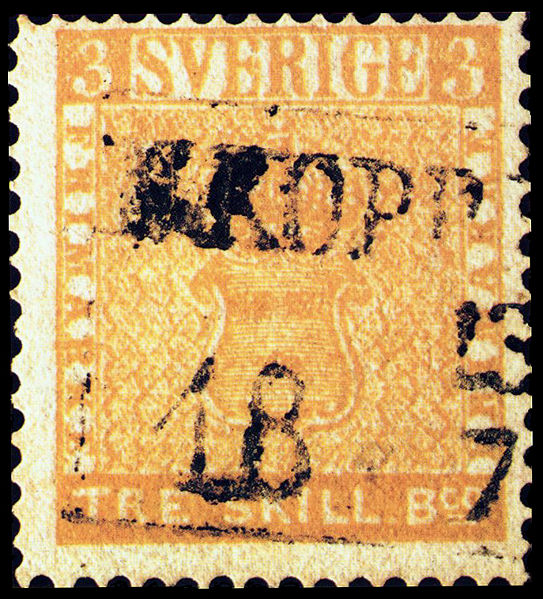
The Treskilling Yellow, or three schilling banco error of color, is a postage stamp from Sweden in which there is only one example of it that exists today.
In 1855, Sweden had issued its very first postage stamps that featured the Swedish coat of arms. The stamps issued were in 5 different denominations and colors: 3 (color Blue-green), 4 (Blue), 6 (Gray), 8 (Yellow), and 24 (Red) Skilling Banco. It is not really known what went wrong, but because of a printing error, instead of the usual blue-green color, one of the 3 skilling stamps came out on the yellow-orange paper which was actually used for the 8 skilling stamp.
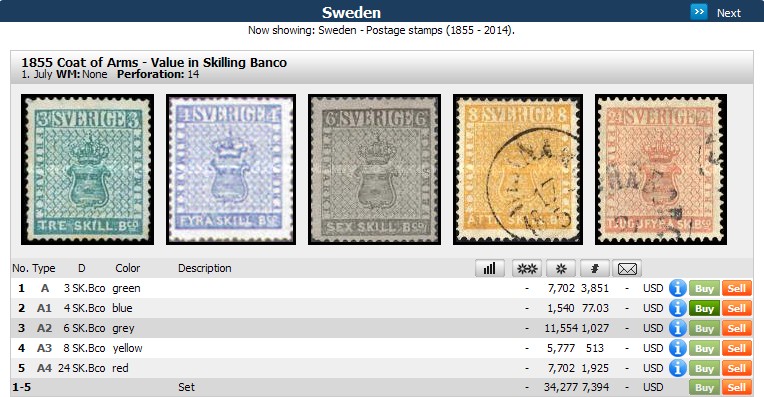
A screenshot image taken from the StampWorld online catalogue, you will see the 5 series of the first postage stamps issued in Sweden. Click here to go to the catalogue of Sweden stamps.
The error went unnoticed until 1886 when a young stamp collector named Georg Wilhelm Backman discovered the stamp while going through covers in his grandmother’s attic.
The exact quantity of these stamps mistakenly printed is not really known. Therefore, the Treskilling Yellow is deemed to be a one-of-a-kind rare stamp, because no other copies have been found yet.
In 1996, it was auctioned in Geneva, Switzerland and sold for at least US$2.3 million. In May 2013, it was acquired through a private sale by a Swedish politician and nobleman named Count Gustaf Douglas.
-
British Guiana One-Cent Black on Magenta
Country: British Guiana (now Guyana)
Estimated Value: About US$9.5 million
Reason Why It’s One of the World’s Valuable Stamps: Produced due to stamp shortage
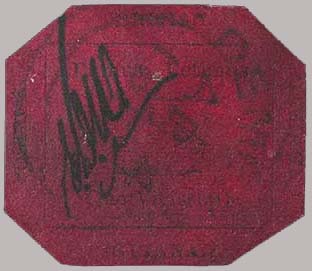
In 1856, there was a stamp shortage in British Guiana because a ship from London, England that was supposed to be carrying stamps to British Guiana was delayed. To solve the shortage problem, the local postmaster requested that the local newspaper printers print some temporary stamps. The printers created 3 types: a 4-cent stamp in blue; and a 1-cent stamp and a 4-cent stamp in magenta.
Because they were only mere temporary stamps and nothing special, the postmaster decided that the stamps had to be simply initialed by an employee of the post office as a way to make sure of their authenticity, and to prevent forgery. The stamp was cut on its corners in a way that it looks like an octagon.
It was first owned by a Scottish boy aged 12 years old who lived in South America during 1873. Surprisingly, the 1-cent magenta stamp has become one of the most valuable stamps as the time passed by. For the past 141 years, this stamp has been bouncing to and fro one collector to another, being sold privately or at public auctions for ever-increasing sale values. One of the main reasons it was deemed as one of the world’s valuable stamps is because it was purchased by Count Philipp la Renotiere von Ferrary, a man known to be one of the world’s greatest stamp collectors.
In the 21st century, the British Guiana one-cent Black on Magenta postage stamp is known by many stamp collectors and philatelists as the world’s rarest, most famous and most valuable stamp. It is considered a rare stamp that was issued in British Guiana (known today as Guyana) during 1856 in very limited numbers. It is the only one stamp known to exist today. This stamp was sold in June 17, 2014 for a whopping $9,500,000 (9.5 million)!
Source: https://antiquewolrd.com
Categories: Stamps

